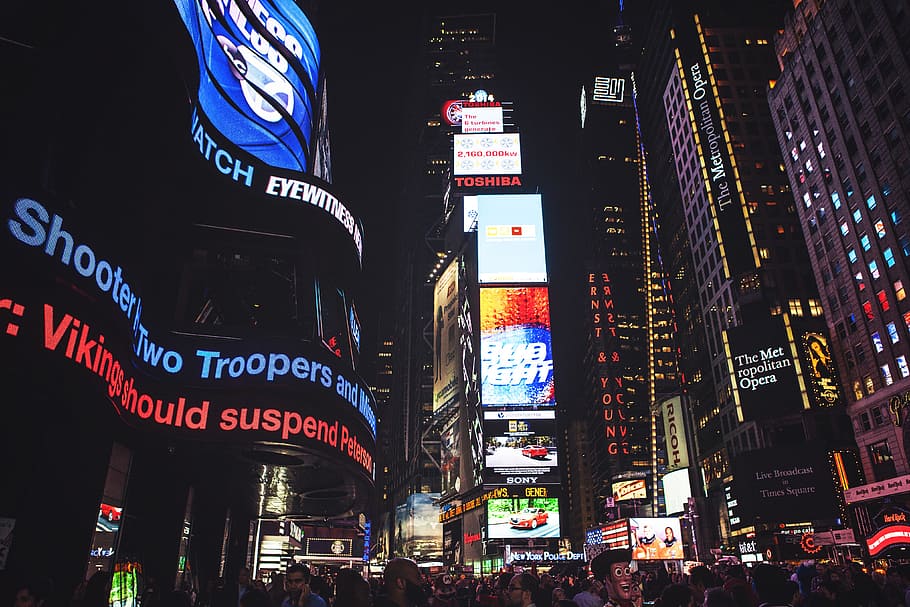キャプティブ 2022.09.30
CA41 役員賠償責任保険の補償枠不足に応えるキャプティブ
For those who prefer to read this column in English, the Japanese text is followed by a British English translation, so please scroll down to the bottom of the Japanese text.
本年、2022年9月27日付「日本経済新聞」朝刊には、「役員賠償保険、5年で販売2倍」という主見出しに加え、「損保4社昨年度、訴訟リスク警戒」「支払限度額の小ささ課題」というカット見出が付加され、冒頭、以下の記事が掲載されていた。
企業役員が不祥事などで訴えられるリスクに備える賠償責任保険の販売が伸びている。損害保険大手4社の契約は2021年度に1万件と5年前の2倍に増えた。経営上の失敗を企業や株主から訴えられるリスクが高まっているためだ。実際の賠償額と比べて支払限度額が小さく、海外役員を起用する際の障害にもなり始めた。

1.リーマンショック
今から14年前、2008年9月15日、米国の大手投資銀行リーマン・ブラザーズが、住宅市場の悪化による住宅ローン問題をきっかけとして経営破綻した。このことは、「リーマンショック」という言葉で未だに多くの人々の記憶にあると思う。
住宅ローンでは、優良客(プライム層)より低いカテゴリーの層は、「サブプライム」と呼ばれているが、このサブプライム層向けの多くのローンが証券化され、世界各国の投資家へ販売された。2001年から続いた米国での住宅価格の上昇を背景に、この「サブプライム・ローン証券」にも「格付け機関」は高い評価を与えていたからであり、この証券は他の金融商品などと組み合わされ世界中で販売されていた。
しかし2007年夏頃より、住宅価格の下落が発生し始めた。このため、「サブプライム・ローンが不良債権化した」と見做されるようになり、サブプライム・ローン債権が組み込まれた金融商品も信用力を失い、市場では投げ売りが相次いだ。
市場の信用不安から多くの証券化商品の価格暴落も発生、その保証をしていた米国の世界最大級の保険会社も倒産の崖縁を彷徨い、かろうじて米国政府の救済策により命脈を保つことができた。世界の金融市場と各国経済を大きく混乱させ「恐慌一歩手前の状況」を現出することになった出来事が「リーマンショック」と呼ばれているものである。
2,リーマンショックが保険業界に与えた影響
サブプライム問題が峠を越す頃から発生したのが、「サブプライム・ローン問題への対処を誤った」と会社経営陣に対して提起された株主集団訴訟の急増であった。
ほとんどの訴訟で、経営陣が敗訴、和解になったが、その際、株主からの賠償請求に応じ、役員が加入していた「会社役員賠償責任保険(D&O保険)」の保険金支払いは、80億ドル(1兆1000億円)以上に達したと米国の保険専門誌は推計していた。
しかし、更なる問題は、保険金の支払い額だけではなく、賠償責任保険では往々にして起きることであるが、裁判の長期化である。そのために更に莫大な訴訟費用が必要となったからである。
しかし、この会社役員賠償責任保険(D&O保険)の保険金支払い額よりも、更に巨額の保険金支払いになった保険が存在したが、「マスコミの興味の喪失」によってか、報道されなかった保険があった。
サブプライムの「説明に誤りがあった(Errors)」、また「充分な説明を怠った(Omissions)」と企業の説明責任が問われたことである。職業賠償責任保険(E&O:Errors & Omissions)のクレーム(損害賠償請求)であった。
その対象は金融機関に限らなかった。「格付け機関」は、2007年7月サブプライムを組み込んだ商品を広範に格下げしたが、一気に数段階下げられ「ダブルA格だったものがジャンク債並みの価格で取引されるもの」が頻出した。これは、「当初の格付けが甘かった」と格付け機関が、また「そのリスクを法務チェックできていなかった」と法律事務所が、訴訟の標的となったのである。

3.会社役員賠償責任保険
世界的には「D&O(Directors(取締役)&Officers(執行役員)保険」と呼ばれる「会社役員賠償責任保険」は、賠償金、和解金、また役員個人で雇った弁護士費用などを補償する保険である。企業が保険契約者となり保険料を負担する。企業、役員が業務判断、執行に関して訴訟される様々なリスクを補償して、企業、また役員が保険金の受取人になる保険である。
「会社役員賠償責任保険(D&O保険)」が日本に導入されたのは、1990年8月1日であった。その時の「保険約款」は海外一円で事業活動する企業のため、「欧米並みの広範な補償」を有する「英文約款」であった。
当時、筆者は先行認可取得三社のうちの一社に在籍、主務官庁よりの商品認可を前提に発足した「経営保険室」と名称を冠した組織、「会社役員賠償責任保険(D&O保険)の引受業務部門」の副長として、主務官庁との折衝、保険商品の導入講演会等に忙しく飛び回っていたことを昨日のことのように思い出す。
2022年9月27日付「日本経済新聞」朝刊には、冒頭引用した文章に続いて以下の文章が掲載されていた。
「おたくの限度額はいくらですか」――。福島第一原子力発電所事故を巡る東京電力の株主代表訴訟で東京地裁が7月、旧経営陣4人に計13兆円超の支払いを命じると、ある事業会社のリスク担当役員は同業他社と探り合った。放射能汚染は損害保険の補償対象外だが、企業に役員個人のリスクを再認識させた。
積水ハウスでは17年に地面師グループに架空取引で土地購入代金約55億円をだまし取られる事件が起きた。経営判断に誤りがあったなどとして、当時社長だった阿部俊則元会長らは損害額と同額を会社側に支払うよう求める訴訟を株主から起こされている。大阪地裁が5月に請求を棄却したが、株主側は控訴する方針だ。賠償が確定したのち、この賠償額は役員賠償責任保険の補償対象となる見込みだ。
大手4社(東京海上日動火災保険、損害保険ジャパン、三井住友海上火災保険、あいおいニッセイ同和損害保険)の契約状況を集計すると、売上高に相当する保険料収入は年々増加して21年度は165億円と16年度比で5割弱増えた。「22年度も増える見通し」(複数の損保)で、今後も非上場や中小企業の加入が増えそうだ。
日本の2021年度の会社役員賠償責任保険の総収入保険料は165億円とある。一方、世界全体では150億ドル、邦貨にして2兆円を越える規模である。如何に日本の市場が小さいかが分かる。当然提供できる補償枠も少額にならざるを得ないのは容易に想像できる。
筆者は、前述のとおり、この会社役員賠償責任保険を日本に導入した時の関係者の一人であり、その後、別の米国の保険会社の本社にて「キャプティブ事業部」の所属となり2年間勤務した後、「保険ビッグバン」の声を聞き帰国、日本で設立されたばかりの大手財閥系生命保険会社の損害保険子会社の経営コンサルティングの委嘱を受け、13年間、毎年2カ月に1回、年6回、「損害保険の殿堂」とも言われ、「最後に保険が行き着くところ」とも評されるロイズ(Lloyd’s of London)を中心としたロンドン保険市場(ロンドン・マーケット)へ通いつめた。
その目的は、コンサルティング先の小さな損害保険会社が「巨大な損害保険会社と競合しても勝てる商品の開発のため、ロイズのアンダーライター(シンジケート)との業務提携、協力をおこない、日本のどの損害保険会社にも勝てる商品の開発と潤沢な保険引受力(キャパシティ)の確保」であった。対象とした保険は「取引信用保険」とこの「会社役員賠償責任保険」であった。幸いなことに、親会社をあげての営業が功を奏し、また優秀なスタッフに支えられて、小さな損保でありながら、数年間で大きな市場シェアを得ることができ、ロンドンからロイズのアンダーライター達も来日、祝賀パーティをおこなったことを記憶している。
その際に学んだことは、海の向こうのロンドンマーケット(ロンドン保険市場)には、日本では想像できない程のキャパシティが溢れているということであった。
今回のまとめ
会社役員賠償責任保険の総填補限度額(総補償額)は、多くの日本企業では、役員全員で5億円から10億円程度である。前述のとおり、日本の会社役員賠償責任保険の市場を調査した際にも、日本を代表するような規模の会社でもその補償額は30億円から50億円程度であった。
今回のコラムを記すにあたって少し調べてみてもこの状況は変わっていないようである。筆者が知る限り、欧米の大企業と言われているところの補償額は最低でも1億ドル(140億円)レベルで、巨大企業となるとその値はこの5倍、10倍となるところもあった。
地震保険でもそうであるが、日本のメガ損害保険会社でも提供できる補償枠は欧米の市場で可能となる金額と比べると遙かに小さい。
昔と違って、東証プライム上場企業のトップに外国人が就任している。海外企業の買収をおこなうと海外役員を取り込むことも増える。国際化によって、外国人株主比率が高まっていけば、「物言う株主」が関与する株主代表訴訟が起きやすくなる。
D&O保険(会社役員賠償責任保険)は、地震保険と同様に、何時起きるか分らないリスクに対応する保険である。幾らガバナンス、コンプライアンスを厳しく遵守して事業経営をおこなっていても、「不合理なことを主張するステークホルダー」はどんな世界に存在する。だから必要な保険なのである。いざという時、「初期消火」をしなければ「企業、役員に非が無くても火事にさせられてしまうから」である。
このような、十分な初期対応費用への補償を含めて「初期消火」に万全を期すD&O保険であれば相応にコストも掛かる。しかも、「何年、何十年に1回起きるか否かのD&O事案である、保険を掛けるかどうか」と考えるのが普通である。
毎年高額なD&O保険料を「掛け捨てで支払うこと」のではなく、再保険の手当をしっかりして完全にリスクヘッジしながら、「保険料の内外価格差を活用して蓄財する=リスクを収益に変える(Turning Risk to Profit®)」こと、これをキャプティブを設立しておこなうことは、企業戦略の本義に適うリスクマネジメントに関する経営戦略である、そう考えている企業が欧米には多い。だからこそ、欧米では7,000を超えるキャプティブが設立、運営されているのである。
地震保険や会社役員賠償責任保険のように、「掛けるか掛けないかを迷う保険」こそ、キャプティブの効用を最も発揮して、企業に大きな収益を与えることになる可能性が高い。キャプティブの設立をおこなうことによって、日本の損害保険会社が提供できない大きな補償金額の提供を可能にしてリスクマネジメント態勢を盤石にしていく時代に入ってきたと強く感じた新聞記事であった。
執筆・翻訳者:羽谷 信一郎
English Translation
Captive (CA) 32 – Captives respond to the lack of coverage for directors’ and officers’ liability insurance.
The following article appeared in the morning edition of the Nihon Keizai Shimbun on 27 September 2022, with the headline ‘Directors’ and officers’ liability insurance sales double in five years’ and the headlines ‘Four non-life insurers wary of litigation risk last year’ and ‘Small payment limits a challenge’.
Sales of liability insurance, which covers the risk of corporate directors and officers being sued for misconduct, are growing. The four major non-life insurance companies have signed up 10,000 policies in FY2021, double the number five years ago. This is due to the increasing risk of being sued by companies and shareholders for management failures. Payment limits are small compared to actual compensation, and this has started to become an obstacle to appointing overseas directors and officers.
1. the Lehman Brothers collapse
Fourteen years ago, on 15 September 2008, Lehman Brothers, a major US investment bank, collapsed due to mortgage problems caused by the deteriorating housing market. This should still be remembered by many as the ‘Lehman Shock’.
The rise in house prices in the United States, which began in 2001, led to the creation of the ‘sub-prime mortgage securities’ rating system. The securities were sold worldwide in combination with other financial products.
However, from the summer of 2007, house prices began to fall. As a result, it came to be regarded as ‘sub-prime loans turned bad’, and the credit guarantees for the financial products in which the sub-prime loans were embedded also lost their creditworthiness, and there was a wave of selling off of these securities in the market. The credit uncertainty in the market caused the prices of many securitised products to plummet, and one of the world’s largest US insurance companies, which had guaranteed these products, was teetering on the edge of bankruptcy, but was barely able to maintain its vitality thanks to a US government bailout. The event that greatly disrupted the world’s financial markets and the economies of various countries and led to the emergence of a ‘situation one step short of a depression’ is known as the ‘Lehman Shock’.
2, Impact of the Lehman Shock on the insurance industry
On the other hand, from the time when the sub-prime mortgage crisis began to pass, there was a sharp increase in shareholder class action lawsuits filed against company management for ‘mishandling the sub-prime mortgage problem’.
In most of the cases, the management lost the case or settled, but US insurance magazines estimated that the amount paid out by the Directors and Officers Liability Insurance (D&O insurance), which the directors and officers had taken out in response to claims from shareholders, reached more than USD 8 billion (JPY 1.1 trillion).
A further problem, however, is not only the amount of claims paid out, but also, as often happens with liability insurance, the length of court cases. This was because of the huge legal costs involved.
However, there was one policy that paid out even more than the D&O policy but was not reported due to a ‘loss of interest in the media’. There was another issue that was not covered by the media: the accountability of companies for sub-prime ‘errors in explanation (Errors)’ and ‘failure to provide sufficient explanations (Omissions)’. It was a professional liability insurance (E&O: Errors & Omissions) claim.
The scope was not limited to financial institutions. In July 2007, the ‘rating agencies’ downgraded a wide range of products with subprime embedded in them, often by several levels at once, and ‘some that were rated double-A were trading at prices comparable to junk bonds’. This made the rating agencies the target of lawsuits, claiming that the original rating was too low, and law firms, claiming that the risks had not been legally checked.
3. Corporate Directors & Officers Liability Insurance
Corporate directors’ and officers’ liability insurance, known globally as directors’ and officers’ (D&O) insurance, covers indemnities, settlements and the costs of lawyers hired by individual directors and officers. The company acts as the policyholder and bears the premiums. The policy covers the company and its directors and officers against various risks of lawsuits in connection with their business decisions and execution, and the company and its directors and officers are the beneficiaries of the insurance proceeds.
D&O insurance was introduced in Japan on 1 August 1990. At that time, the policy clauses were written in English, with “extensive coverage comparable to Europe and the US” for companies operating overseas.
At the time, the author recalls as if it were only yesterday that he was busy negotiating with the competent authorities and giving lectures on the introduction of insurance products as deputy head of the ‘D&O Insurance Underwriting Department’, an organisation named the ‘Management Insurance Office’, which was established on the premise that the product would be approved by the competent authorities.
In the morning edition of the Nihon Keizai Shimbun dated 27 September 2022, the following sentence appeared following the sentence quoted at the beginning of this article.
‘How much is your limit? In July, when the Tokyo District Court ordered TEPCO to pay a total of more than 13 trillion yen to four former executives in a shareholder derivative action over the accident at the Fukushima Daiichi nuclear power station, a risk officer at a business company explored the issue with his peers. Although radioactive contamination is not covered by non-life insurance, it reminded companies of the risks to individual executives.
In 2005, Sekisui House was defrauded of approximately JPY 5.5 billion in land purchases through fictitious transactions by a group of land sharks. Former chairman Toshinori Abe, who was president at the time, and others are being sued by shareholders demanding that the company pay an amount equal to the amount of damages, claiming that there were errors in management judgement. The Osaka District Court dismissed the claim in May, but the shareholders plan to appeal. After the compensation is finalised, this amount is expected to be covered by directors’ and officers’ liability insurance.
According to a tally of contracts concluded by the four major insurers (Tokio Marine & Nichido Fire Insurance, Sompo Japan Insurance, Mitsui Sumitomo Insurance and Aioi Nissay Dowa Insurance), premium income, which corresponds to sales, has been increasing year by year and in FY 2009 was 16.5 billion yen, up nearly 50% compared to FY 2004. The number of unlisted companies and small and medium-sized enterprises (SMEs) is likely to increase in the future.
Gross premiums written for corporate directors’ and officers’ liability insurance in Japan in FY2021 are estimated at JPY 16.5 billion. In contrast, the global market as a whole is worth USD 15 billion, or over JPY 2 trillion in Japanese currency. This shows how small the Japanese market is. It is easy to assume that the amount of coverage that can be offered is also small.
As mentioned above, the author was one of the people involved in the introduction of this corporate directors’ and officers’ liability insurance in Japan, and after working for two years in the captive business department of another US insurance company at its head office, heard the call for an “insurance big bang” and returned to Japan, where he was commissioned to manage the non-life subsidiary of a major conglomerate life insurance company just established in Japan. For 13 years, I visited the London insurance market (London Market), centred on Lloyd’s of London, which is also known as the ‘Non-Life Insurance Hall of Fame’ and is described as ‘the last place where insurance goes’. The key to the London market was to “develop products that can compete with any Japanese non-life insurer and secure ample underwriting capacity”.
The purpose was for the small non-life insurance company to “develop products that could compete with the giant non-life insurance companies, through business cooperation and collaboration with Lloyd’s underwriters (syndicates), to develop products that could beat any non-life insurance company in Japan and to secure ample underwriting capacity”.
What I learnt was that the London market (London insurance market) is full of capacity beyond what we can imagine in Japan.
Summary of this issue
The total coverage limit of corporate directors’ and officers’ liability insurance is around ¥500 million to ¥1 billion for all directors and officers in most Japanese companies. As mentioned above, in a survey of the Japanese corporate directors’ and officers’ liability insurance market, the amount of coverage for even a leading Japanese company was in the region of JPY 3 billion to JPY 5 billion. A little research conducted for this column suggests that this situation has not changed. As far as the author knows, the minimum amount of compensation for large companies in Europe and the US is at least USD 100 million (JPY 14 billion), and for giant companies the figure is five or ten times this amount.
As is the case with earthquake insurance, the coverage limits offered by Japan’s mega non-life insurers are far lower than what is possible in the Western market.
Unlike in the past, foreign nationals now head companies listed on the TSE Prime List. Acquisitions of foreign companies increasingly bring in foreign directors. If the ratio of foreign shareholders increases as a result of internationalisation, shareholder derivative suits involving ‘silent shareholders’ are more likely to occur.
D&O insurance (directors’ and officers’ liability insurance), like earthquake insurance, covers risks that may arise at any time. No matter how strictly you manage your business in accordance with governance and compliance, there will always be ‘unreasonable stakeholders’. That is why it is necessary insurance. If the initial response is not carried out, “even if the company and its directors are not at fault, they will be forced into a fire”.
D&O insurance that takes all possible measures to ‘extinguish the fire in the initial stages’, including adequate compensation for initial response costs, will cost a reasonable amount, and it is normal to think of this as a ‘once-in-a-few-years or once-in-a-decade event’. Instead of paying high annual D&O insurance premiums on a ‘pay-as-you-go’ basis, a captive should be set up to ‘turn risk into profit®’ while fully hedging risk by making good use of the difference between domestic and overseas premium prices, while ensuring that reinsurance is in place. Many companies in Europe and the US consider this to be a risk management strategy that is in line with the essence of corporate strategy. That is why more than 7,000 captives have been established and are in operation in Europe and the USA.
Captives are likely to be most effective and provide companies with a significant return on their investment when it comes to ‘insurance you don’t know whether to buy’, such as earthquake insurance or directors’ and officers’ liability insurance. This newspaper article strongly suggests that we have entered an era in which the establishment of captives will make it possible to provide large amounts of compensation that Japanese non-life insurance companies are unable to offer, and to strengthen their risk management systems.
Author/translator: Shinichiro Hatani

